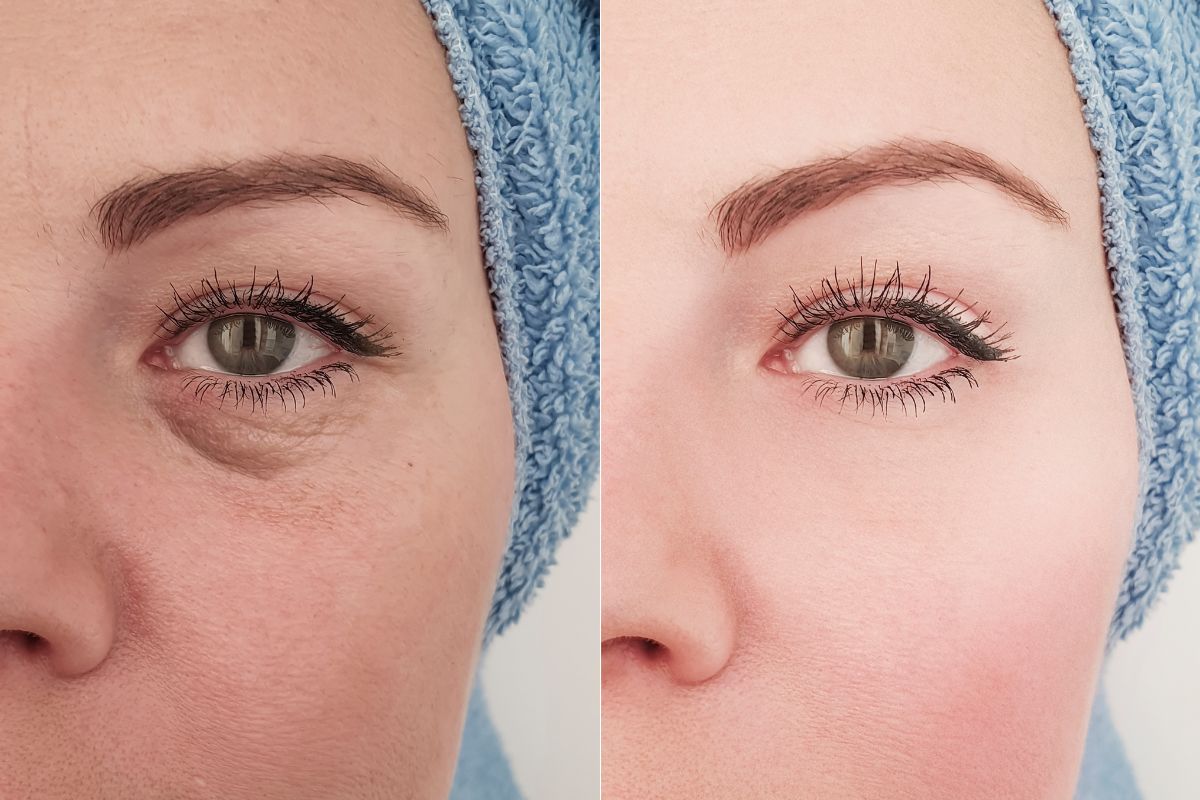Tear Trough Filler: What You Need to Know Before Getting Under-Eye Fillers

The landscape of beauty and skincare is rapidly evolving, with various non-surgical approaches now dominating surgical beauty restoration treatments. Under-eye hollowness and dark circles have been surgically treated in the past but now can be treated non-surgically with fillers in a procedure called tear trough filler, which is an easy and quick fix. Are you wondering whether it’s safe or right for you?
This guide tells you all that you need to know about tear trough fillers and their benefits, alongside the risks, costs, and the after-treatment expectations.
Table of Contents
ToggleWhat is a Tear Trough Filler?
This refers to a specific cosmetic filler treatment for dark circles and tired-looking eyes. It consists of applying the dermal fillers, mostly based on hyaluronic acid, to the under-eye hollows. The tear trough refers to the area under the eye (the groove that starts towards the nose and side of the eye) and extends towards the cheek. With ageing, this skin area tends to lose fat, leading to loss of skin elasticity and hence appearing deeper.
Tear trough fillers aim to:
- Add volume to sunken areas.
- Smooth the transition between the lower eyelid and cheek.
- Improve the appearance of shadows or discolouration.
Fillers are treated by making multiple small injections with either a syringe needle or a blunt-ended tube (cannula) into the desired region.
Who Is a Good Candidate for Tear Trough Fillers?
Tear trough fillers are not appropriate for everyone. The most suitable patients will be:
- People who have slight to moderate levels of ‘hollowness’ beneath their eyes.
- Individuals with some skin laxity or puffiness beneath their eyes.
- Those who do not have any active skin infection or extreme sensitivities.
- People who are seeking a temporary and nonsurgical option.
Tear trough fillers are not appropriate for:
- Individuals with severe under-eye bags or very thin skin.
- People with deep pigmentation (not caused by shadowing).
- Patients with certain medical conditions or unrealistic expectations.
The need for a sound evaluation with an aesthetic doctor or dermatologist specialised in this field cannot be understated.
How Does the Procedure Work?
The procedure is generally simple and takes around 15 to 30 minutes. The following can be expected in this time:
- Consultation: The practitioner assesses your anatomy, discusses goals, and determines the right filler product.
- Cleansing and Numbing: The under-eye area is cleaned, and a numbing cream may be applied to reduce discomfort.
- Injection: The filler is carefully injected using a needle or cannula. This is done gradually and with precision.
- Massage and Finishing Touches: The area is gently massaged to ensure even distribution of the filler.
Most patients notice immediate improvement, although full results typically appear after a few days once swelling subsides.
Benefits of Tear Trough Fillers
There are multiple aesthetic as well as emotional benefits linked with tear trough fillers.
- Instant rejuvenation: These can be seen straight away, as well as updates in the next few days.
- Non-surgical option: These can be done easily without any cutting or stitches. It can even be done during lunch breaks.
- Improvements in self-confidence: Like vanishing under-eye bags and replacing them with pep, feel more vibrant and youthful.
- Minimal downtime: Most people take less than a day to return to professional or social engagements.
- Reversible: Unhappy with results? Not an issue – hyaluronic acid fillers can be removed using hyaluronidase.
Risks and Side Effects
While tear trough fillers are generally safe, especially when performed by skilled practitioners, there are potential side effects and risks:
Common Side Effects:
- Swelling
- Bruising
- Redness
- Tenderness
These typically resolve within a few days to a week.
Rare But Serious Risks:
- Lumpy texture or lumps
- Tyndall effect (blueness under the skin when filler is injected too superficially)
- Vascular occlusion (blood flow blockage)
- Infection
To prevent these complications, choose an injector who is licensed and qualified and preferably has a medical history along with training as a dermatologist, plastic surgeon, or aesthetic nurse.
Aftercare Tips
There are many things to avoid doing after the treatment to ensure long-lasting results. These include:
- Not touching or rubbing the area.
- Strenuous exercise for 24-48 hours.
- Alcohol and blood-thinning medications for a short time afterwards.
- Sleeping with head raised on the first night.
- Apply ice for bruising or swelling.
- Avoid using tanning beds and sun exposure for a few days.
You may also request personalised advice from your physician based on your skin type and chosen filler.
How Long Do Tear Trough Fillers Last?
Factors determining the duration of tear trough fillers include:
- Filler used – Most commonly, Juvederm, Restylane, or Teosyal Redensity II.
- Personal Metabolism
- Injector’s technique
On average, tear trough fillers last between 9 to 18 months; however, maintaining results may require touch-up visits.
Choosing the Right Practitioner
A safe and satisfying result begins with choosing the right professional. Consider the following:
- Board certification in dermatology, plastic surgery, or aesthetics.
- Extended mastery of the specific treatment: tear trough fillers.
- Client before and after photos.
- Online rave reviews or referrals.
- Clarity on all questions asked during the initial consultation.
Providers who offer services based on price should be avoided. Lower-cost procedures offered by unqualified injectors can lead to health complications that require corrective treatment.
Final Thoughts
For those wishing to appear more youthful without undergoing surgery, tear trough fillers provide a reliable method. While the term “quick fix” is frequently misused, there is no doubt that this treatment is meticulous and requires skill and profound understanding of facial anatomy.
Combating genetics, the ageing process, or simply seeking a refreshed look, tear trough fillers offer a significant impact without much effort. With that in mind, safety always comes first, and consulting a seasoned practitioner beforehand is a must, alongside a careful consideration of pros and cons.
Published by Amanda Mills
I'm Amanda Mills, Senior Content Strategist, and I've been shaping digital marketing narratives since 2011. With a master’s degree in Digital Marketing and a bachelor’s in Media Studies, I specialize in blending creative storytelling with data-driven strategy to create content that not only engages but delivers results. View more posts







